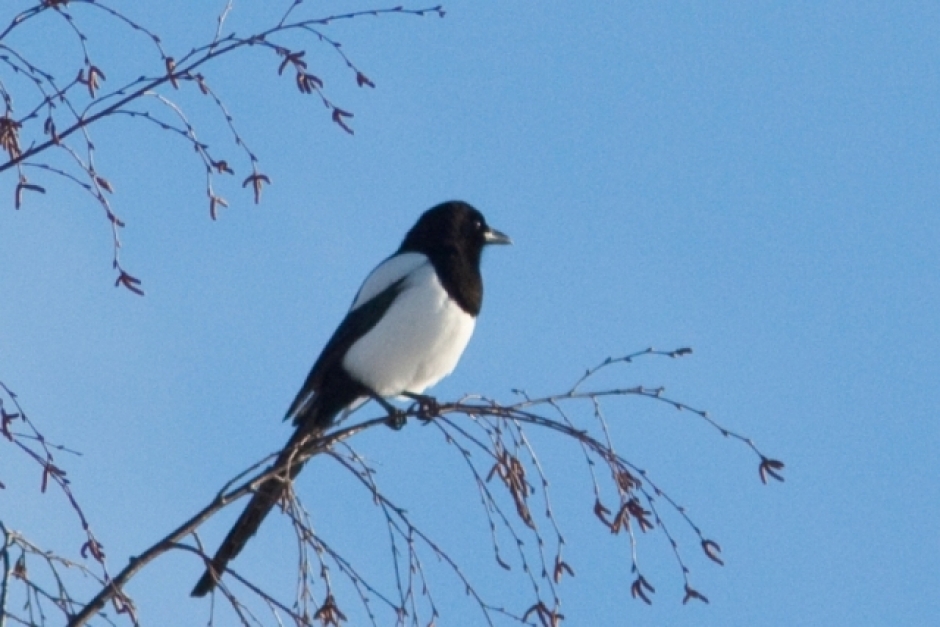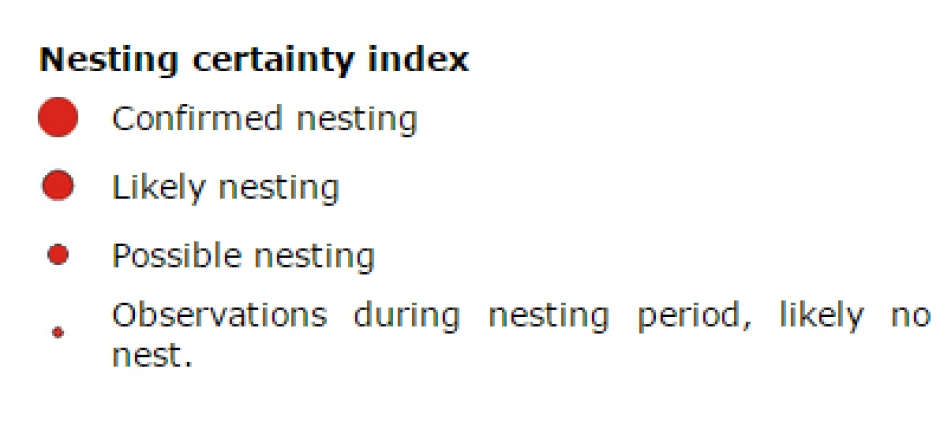European Magpie
Pica pica

General information. The black and white magpie with its long tail is a well recognized corvid. It inhabits areas close to humans, in both urban and rural environments. The nesting population in Finland over the past 22 years has maintained a stable level.
- Length 50 cm
- Nests in trees
- Sedentary species
- Feeds on seeds, worms, insects, scraps, rodents etc
Habitat. Small woodland areas in urban environments and residential areas create suitable habitats for the European magpie. It thrives in wild growing plantations where its visible nest, constructed with twigs, is protected from enemies due to its surrounds and roof cover. Nests have also been found in housing plots, gardens and parks. The species is most easily observed during the nesting breeding season in March, where groups of magpies can gather for a lively ‘conference’.
Distribution in Vaasa. The European magpie is a bird of cultural landscapes and can be found nesting wherever there are human settlements. The majority of the population is located in the built up areas and countryside around the village of Sundom. Random observations made in Saukkoranta and the Gerby-archipelago is most likely magpies searching for territory rather than nesting. In the survey, which was conducted during the nesting season, the magpie was observed in a total of 130 survey blocks. Nesting is relatively easy to establish, which is why over half of the observations are confirmed nestings.


